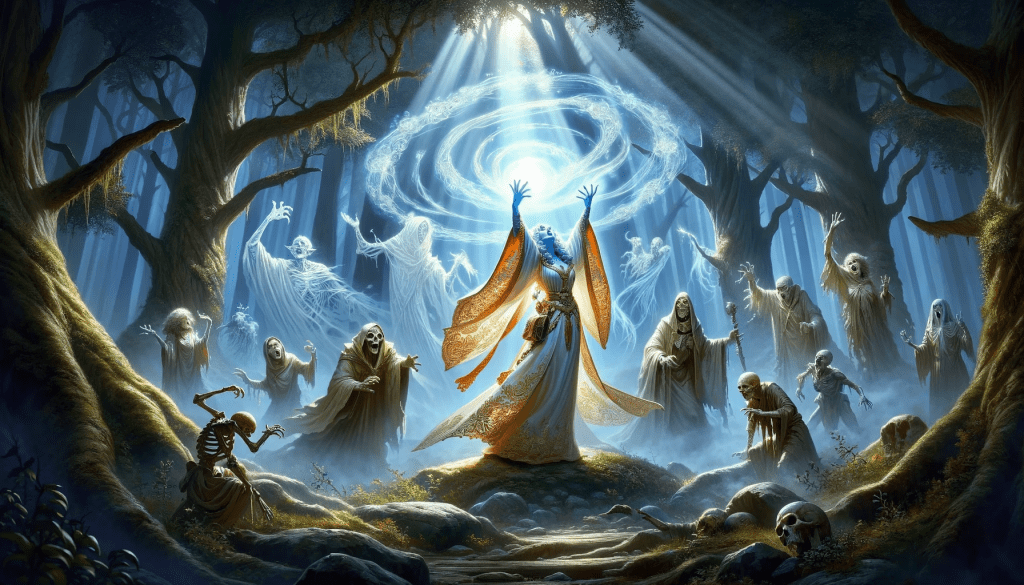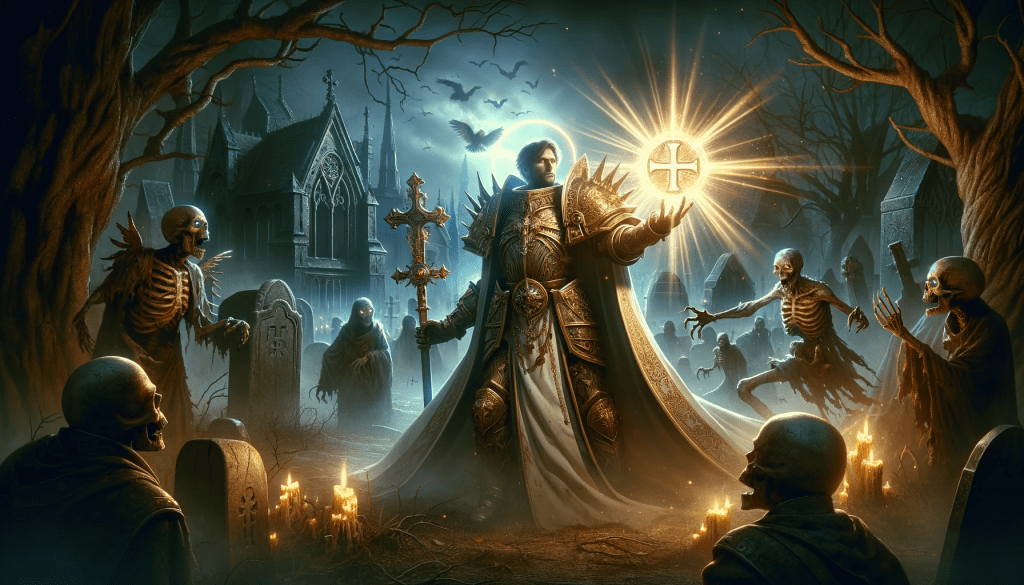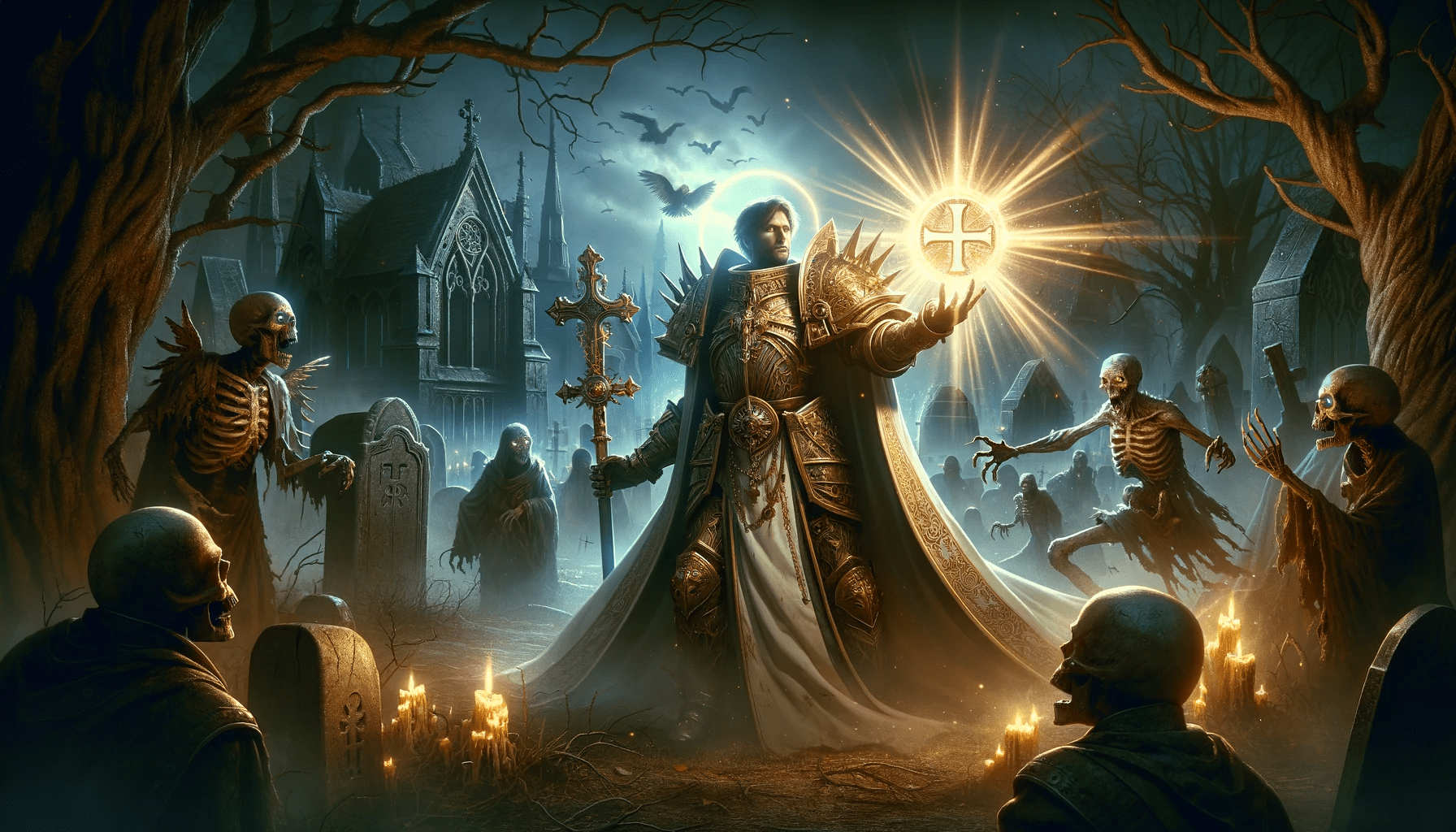Turn Undead 5e Channel Divinity d&d
Almost all clerics have the ability to channel the turn undead 5e divinity. Turn Undead is a spell that clerics can use to push back undead for at least fifteen feet, if they are within five feet of the target. It is contingent upon the Cleric’s degree of personality strength. The blast has the ability to permanently blind undead or temporarily paralyze them.
A creature that has turned must move as far away from you as it can in turns. Within thirty feet of you, it is immobile. Reactions are also not accepted by it. Its only means of action is the Dash action. The Cleric can use undead attacks in place of regular attacks. The Cleric may roll on the table if he can become undead. The 2d6 hit undead dice will run if the roll is successful. You have an unlimited number of undead turns.
Channel Divinity
It’s not about using a spell or going after the undead when using Channel Divinity. At the second level, you can directly channel divine energy through your deity. You can use this energy to produce magical effects. In addition, you can pray for the undead and show them your holy symbol. For every undead within thirty feet, a Wisdom saving throw must be made. You can use Channel Divinity without having to cast a spell. If it did, that would be spell casting. “Using this feature allows for you to cast many things,” the rules would say. However, according to The Player’s Handbook, page 202, the fundamental guidelines are the same regardless of the character’s class when casting a spell.
The spell’s name, level, school, range, components, and duration are among the first details listed in the spell description. The remainder of the spell entry describes the effect of the spell. Nothing in the description of the class feature mentions casting a spell. None of this information is included in the description of Channel Divinity. Although it isn’t a formal decision, Jeremy Crawford, the primary rules designer for D&D, was questioned about it:

Is Dispel Magic 5e able to work with Channel Divinity powers or Dispel Magic?
Additionally, he tweeted that:
- Divinity Channeling is not a sorcery.
- Divinity via Channel is not an assault.
- The description would say “make an attack roll” (or “make a spell attack rolls”) if it were an attack.
Page 194 of The Player’s Handbook:
It is simple to keep in mind that an attack is represented by the roll of attack dice whenever you are not sure if an action you take qualifies as an attack or not. Your direct message can determine. With regard to this section of the Turn Undead function description, your DM might be able to assist you: To appease the undead, you offer your sacred emblem and offer prayers. The main purpose of this action is defense. That the sanctuary is intact could make sense.
Maybe it is just a help request. Perhaps it’s your deity acting, not you. You are merely a vessel through which this power is channeled. Maybe because you didn’t do anything overtly offensive, the sanctuary is secure. It’s possible that your group will concur that this is illogical and goes against sanctuary. It will be your DM who will narrate the tale.
What does Turn undead 5e do for Paladin?
Turn Undead 5e is not available to paladins until Level 4. It’s simple to reset your enhancements. It only costs a small amount of platinum. It won’t be effective to turn undead on a Paladin. The best tier-one enhancement is the Knight of the Chalice Tree’s extra turn undead. Divine Might is available to you in tier two. How many times you can use it depends on how many turn undead charges you have.
Cleric Destroy undead 5e Feature
Channel Divinity: Turn Undead: Make a Wisdom saving throw to turn any undead within 30 feet of you that can hear or see you. If the creature fails to make a saving throw, it is turned for one minute or until it takes damage.
| Cleric Level | Destroy Undead of CR |
| 5 | 1/2 or lower |
| 8 | 1 or lower |
| 11 | 2 or lower |
| 14 | 3 or lower |
| 17 | 4 or lower |
The creature will not be harmed if it makes a successful saving throw. Move the undead aside. An undead at level five is instantly destroyed if it is unable to make a save against your Turn Undead feature. If the creature makes a successful saving throw, nothing happens to it. The only creatures that cannot move or are destroyed if they miss their saving throw are the undead.
Example:
A wight and four zombies (CR 3) are near the level 5 cleric. The Cleric becomes a zombie. Each of the five players will roll their saving throw, which we’ll refer to as DC 13 for the purposes of illustration. Two zombies roll 5, 9, 17, and 13, resulting in the destruction of two of them and the survival of the other two. They return again and again, groaning, “Brains!” The Wight gets an eleven on the roll. The Wight gets an eleven on the roll. If the Cleric had reached level 14, the Wight would have been destroyed.

What does Turn Undead mean for 5e Clerics?
- It is the most fundamental spell available to clerics.
- Regardless of which Domain (Divine or Life) a Cleric chooses, it is their right.
- From the first to the fifth levels, the Cleric cannot use it unless they have finished a quick rest of one hour. At the sixth level, they can use it twice in one instant.
- According to page 58, each Undead must attempt a Wisdom saving throw against the spell save DC. I.e.
- Add your proficiency bonus, your wisdom modifier, and spell save DC of 8.
- It covers all undead within a thirty-foot radius.
Throw of wisdom-saving
- The monster’s wisdom is 10 => +0.
- The Spell Save DC for Level 4 Clergy is 8 + 2 (+prof bonus) + 3. (Wisdom = 16)
- First Monster rolls >12 + 0 (modified by wisdom). => failed and had to leave
- The second monster does not need to move away because it rolls >13 + 0 (the wisdom modifier).
You must consider this as a DM: Would every undead person be within 30 feet of the Cleric? The majority of undead will turn if the response is yes. This implies that about six out of ten voters will support it. out of ten?
Additionally, the monster will be turned, meaning that it will try to escape for ten turns, or one minute, OR until it sustains damage.
A cleric can create undead in place of an attack. The Cleric may roll on the table if he can become undead. The 2d6 hit undead dice will run if the roll is successful. You have an unlimited number of undead turns per encounter and day.
D&D took the initiative to have everyone in the group roll a d6. You cannot become undead by virtue of a unique initiative rule. Taking action when you’re ready is preferable, regardless of what you decide to do.
